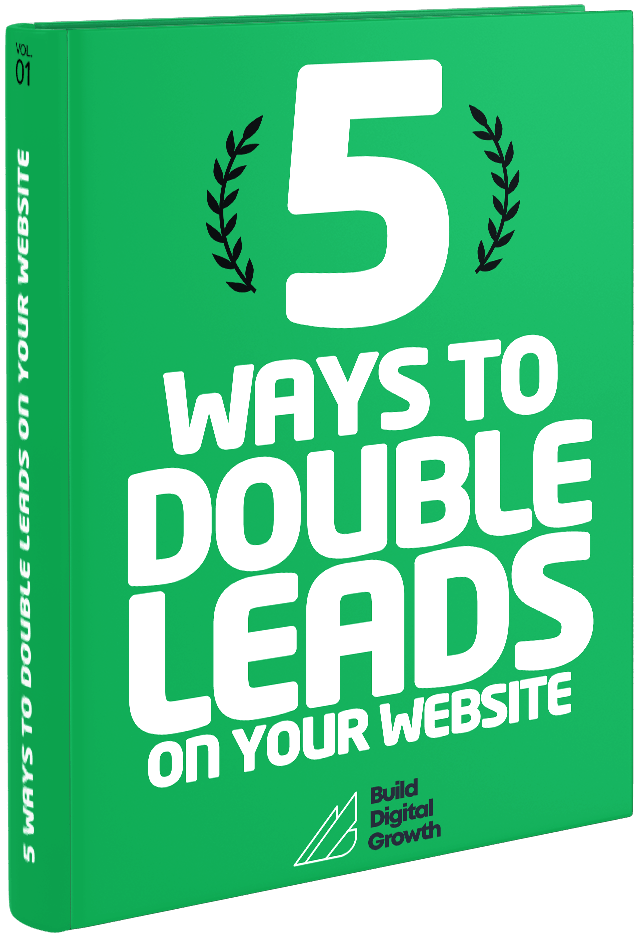What comes to your mind when you think of a website design? Is it the look of the pages? The images that come with the content? A lot of people tend to think of these things but it’s all wrong. The majority of businesses find themselves blowing their budget on a website which turns out to be futile. It simply doesn’t deliver. This is because most websites are designed to be pretty. They aren’t designed to perform. Wouldn’t it be nice if your website is not just pretty but is also designed with more important things in mind such as strategy, lead generation, goal attainment, and keeping your customers happy?
Design is the most important part of a strong marketing platform. It impacts a lot of key assets that are used to attract, convert, and please potential leads and customers. These include the brand logo, websites, social media platforms, paid ads, and physical materials. A superb and consistent design identifies your company and can make or break it.
This is where agile development comes in. Agile development is used in reference to start-up companies, especially in the software space. It divides tasks into short phases of work, with constant reassessment and adaptation of plans.
Web design should take the agile development approach with a focus on the frequent reassessment and adaptation of plans. It is an iterative development process that
focuses on your key analytics and data, surely not on a pretty front page.
A Shift to Agile
With a Growth-Driven Design (GDD), you build and optimise your website so that it can achieve your goals. The key elements involved here are analytics, buyer personas, and data, aligning the design elements with conversion funnels, content, and structure.
Growth-driven designed websites are often optimised for performance. You don’t stop looking for the best ways to connect with your audience. It’s not a new concept but traditional agency approaches to digital design are outdated and must, therefore, be challenged.
So what makes GDD different from traditional web design? If you have ever seen a building blueprint, you’ll know that everything is decided upon prior to construction. This is comparable to traditional web design. With GDD, it starts with a smart and agile process based on what you believe will work and then implemented quickly. This includes a framework and relevant content to connect with your main personas. Once it goes live, you take the actual data to make decisions and changes, applying quantitative and qualitative research strategies to identify and build the next feature or iteration of your website.
Once you find what has the most impact on the results and goals such as traffic or conversion percentages, you repeat the process, keeping the website components that work and optimizing what doesn’t.
Now, let’s take a look at the three main pillars of GDD:
- Fewer risks compared to traditional website design – GDD’s shorter process allows you to focus on real impact and continuous learning.
- Continuous learning and improvements – With regular testing, analyzing, and learning about visitors, you will be able to reach peak performance.
- Closed-loop reporting – Other departments such as the marketing and sales team will also learn about visitor behavior, helping them improve marketing and sales tactics.
Growth-Driven Design: The Works
Traditional web design often talks about the company whereas growth-driven design focuses on solving the problems of potential customers. You should keep in mind that your website should be about your customers, not you. This is why it is important to have a well-oiled marketing machine that not only delivers content but also solves problems. Now let’s take a look at how we can develop a strategic plan for your website design project.
The first phase of any website design project is to develop a comprehensive strategy, whether it’s for a traditional or growth-driven design. These key points will help you create the perfect strategy.
- Goals and planning – First, ask yourself what you’re trying to accomplish with your website. It is also very important to align your website with sales goals via inbound marketing!
- Personas – Identify who your personas are so you can centre your web design around them.
- Research – Get to know your customers by conducting quantitative and qualitative research and use the analytics to your advantage. You can gather insights from actual users or potential customers with heat maps and surveys such as HotJar.
- Hypotheses – Use the data you’ve collected and hypothesize about your audience, focusing on your value proposition and key persona pain points first. This will help you create the first LaunchPad iteration of your website.
- Page strategy – Map out your dream site with UX in mind. Stick to the most important elements and align them with your buyer’s journey. Track the most successful topics which will be useful for building for future iterations.
Your Wish List
In this stage, you should come up with ideas on what to add, remove, or edit on your site. You and your team should look at the data you have gathered so you can decide what kind of pages or content can support potential visitors. What should your list include?
- Changes for user experience, visitor tools, features, functionality, design, and the most helpful website sections and pages.
- Your wants and needs. You can decide on this by looking at impacts, efforts, and metrics.
- Your priorities. Together with your team, decide on what you’ll tackle first.
After The Launch
Once you’ve got your website up and running, you should then shift your efforts to continuous improvement, the next growth iterations, and tests to run. You can accomplish this through an ongoing cycle.
Planning
Look at the changes you’ve implemented and analyze the results. Then, refer to your wish list and decide on what you would implement next based on the following:
- Performance – Check if your website is reaching the goals you’ve set up. Again, refer to your wishlist and see what else you can implement to improve your results.
- Collaborate with the marketing and sales team – Gather new and useful information that you can add to your wishlist.
- Prioritize – Once you’ve updated your wishlist with the new data you’ve collected, decide on which one to prioritize. They should be focused on boosting conversion, improving user experience, personalization to the user, and building marketing assets.
Developing
With your new list of changes or additions, implement and develop them on your website.
- Ask your team to implement the list of items you have chosen.
- Test the impact each change has on your website and measure the results.
Learning
Growth-driven design lets you learn from every change you make. You can always go back through them and learn from your edits and additions.
- Allow enough time to pass then collect and analyze your data. From here, you can begin to see if your hypotheses are correct which can help you adjust accordingly. You can even turn your hypotheses and experiments into valuable content for your audience.
- Ask yourself if the changes made any impact. The results should tell you something about your visitors.
Transferring
Record everything you’ve learned so you can transfer it to other parts of your website which can effectively magnify success in future iterations. Remember, the growth-driven design process is a continuous cycle and there is always going to be something you can improve on. Make sure you’re taking the time to repeat the process.
Implementation Tools
You need to look for ways to measure your initial website performance and the results you get from the growth-driven design changes. You can use inbound marketing tools such as Google Analytics, HubSpot, or other customer relationship management (CRM) for this.
- Drivers – Drivers bring users to your website and will help you analyze and understand your visitors’ purpose. You can use tools such as feedback polls, surveys, and user tests to determine your drivers. SurveyMonkey is a popular tool for surveys.
- Barriers – Barriers could cause users to leave your website because of the things your site does or does not have. These could be pricing issues, lack of trust, confusing or missing calls to action, bad user experience, and so on.To rectify this, you can use tools such as heatmaps, feedback polls, conversion funnels, surveys, and recruiting user testers like HotJar.
- Calls-to-Action – Calls-to-Action (CTAs) are specific pieces of your website that promote conversions which can take the form of offers to a valuable piece of content or other information. With a CTA, you can convert first-time visitors to view your latest blog post or offer someone who is in the decision-making stage a demo of your product. CTAs can easily be managed by HubSpot. They often point to e-books, webinars, and other premium content.
Cost-Benefit of GDD
The goal of growth-driven design is to preserve resources and time as well as eliminate wasteful changes through continuous user-driven improvements. How does it differ from traditional web design?
Characteristics of traditional website design:
- Requires a large upfront cost
- Takes a minimum of three months to complete
- Cost and time can fluctuate
- May lack updates for 1 to 2 years after launch
- Assumes everything is perfect and perform as planned
Characteristics of growth-driven design:
- The cost can be divided into manageable monthly fees
- Can be optimized for any combination of cost, schedule, or scope
- Shorter launch time
- Allows for constant improvements so you can focus on real impact and continuous learning
- Tightly integrated with marketing and sales
Effect of GDD on Inbound Marketing
Inbound marketing and growth-driven design are both about testing, working together to produce results. As an example, let’s say you have a landing page that doesn’t perform well. You can see that there is traffic but most of the visitors are not converting. This is where the analytics come in. From here, if you see that the users who fail to convert are coming from mobile devices, you can hypothesize that they don’t want to fill out the long-form that you have on the landing page.
Your next step would be to test out a smart form that only asks for the name and email when a mobile user lands on the page. Run the campaign for a month and if you discover that the landing page has increased conversion rate by let’s say 20 per cent, you can then transfer this information to all of your landing pages and implement smart forms for mobile
users site-wide.
What to Look for in a Growth-Driven Design Partner
With millions of web designers out there, your next design partner should possess these qualities:
- Has a track record with inbound marketing – Creating an inbound focused website can mean the difference between the new design and a website that significantly increases leads and opportunities.
- Expertise in CMS – Look for someone who is experienced with the content management system on which you are building your site. This will ensure your site can be easily updated without the need for constant developer help.
- Business-minded – Your design partner should have a clear understanding of how your website can impact your bottom line. This ensures your investment generates a return.
- Uses clean and modern designs – Your partner should be adept at applying clean and modern design elements to websites. They should know how to avoid design glitches and are detail-oriented.
- Trusted process – Find a design partner that follows a sound design and development process for both your launchpad site and each monthly sprint. A trusted process will minimize cost and schedule overruns and demonstrate expertise in agile web development.
- Personal experience – Look for a partner who will do the job himself! Design companies that rely on interns, off-shoring, and contractors are not a good idea.
- Personalisation – Seek a partner who can demonstrate expertise in personalization. This can provide a better visitor experience and enhance conversion rates.
Conclusion
The growth-driven design puts the customers first by looking at the analytics and assessing their behaviour. Figuring out how your potential customers are behaving on a website can help you provide them with the information they need. SEO should be a standard part of every website to position it for success. It should be integrated and handled internally.
Finally, make sure you apply the growth-driven design concept of “plan, develop, learn, and transfer” to your business strategy from conception to completion, and you’ll be happy with the results.










